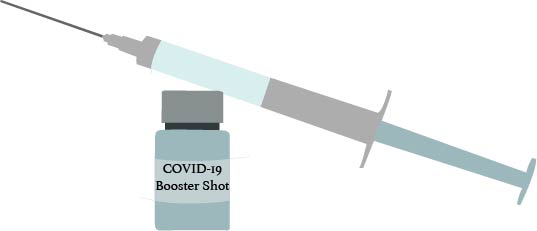The school partnered with Safeway to host a COVID-19 Vaccination and Booster Clinic on Jan. 22, following the Center for Disease Control (CDC)’s approval earlier in the month of Pfizer-BioNTech booster shots for 12- to 15-year olds.
Students who have just become eligible are now receiving their boosters to enhance protection against the omicron variant; however, the surge of positive cases due to omicron has also thrown students into an unexpected dilemma with current policies.
Sophomore Nidhi Vadlamudi, 15, is making plans with her parents to get the booster shot.
“Getting the booster shot is the best way to control the spread of [COVID-19], and extra immunity is the best way to combat new variants,” Vadlamudi said.
According to the Harvard Gazette, the purpose of a booster shot is to increase the “quantity and quality of antibodies that are produced.” These new and matured antibodies can “be more effective at recognizing variants with multiple mutations,” thus protecting against omicron.
When it comes to the speed of approving the booster, Vadlamudi sees both sides of the argument. While she believes that getting the booster can effectively slow the spread of the virus as vaccine efficacy wears off — especially among those who spend a lot of time at school in close proximity to other students — she recognizes that there is a substantial number of people, such as experts from Mayo Clinic, who believe the booster was approved too quickly.
“I think [medical professionals] should have approved it a lot faster because people keep getting sick,” she said. “But there’s also a lot of people who won’t get the vaccine because they think it was approved too fast without being tested, so spending time on it was important to gain trust.”
Assistant principal Matt Torrens said that holding clinics at school encourages staff and students to get the booster shot, and makes it more convenient and accessible.
When it comes to classrooms, he said that having many people indoors at once creates a risky environment; despite the ventilation system the school provides in classrooms, many students are still testing positive.
“We’re trying to minimize the impact that COVID-19 might have on learning,” Torrens said.
For 16- and 17-year-olds, the CDC approved the booster shots on Dec. 9, and older students have been gradually getting their shots.
Senior Miwa Okumura and her mother made an appointment online at Walgreens after they struggled to find a walk-in booster shot at a clinic near her home due to conflict with school hours. They received their shots a week later on Jan. 6 after a 40-minute wait at the clinic, an experience Okumura described as frustrating.
However, Okumura was told on the day of her appointment that she was a close contact of a friend who tested positive for COVID-19, having sat next to and shared food with them a day prior. She still received her shot despite guidelines, such as Kaiser’s, asking people to certify that they have not been a close contact for 10 days, on top of the CDC’s five-day quarantine for close contacts.
“I understand there’s a medical reason for us not to get the booster shot if we’re a close contact, but it’s frustrating that we [technically] can’t get the booster shot — which is needed right now,” Okumura said.
She said that her foremost motivation for getting the booster shot is that she wants to contribute to curbing the pandemic. She also wants better immunity because she plans to travel to Japan this summer to see her father.
Okumara believes that the policy against receiving a vaccine after being in close contact overlooks the practicalities of how rampant close contacts are.
“We can’t avoid getting into close contact. Should I just not go to school for a few days until I can actually get a booster?” she said. “What am I supposed to do to do my part in stopping the pandemic?”


























